In a simple way, the Japanese bamboo whisk, known properly as a “Chasen” is the sublime instrument of the Japanese Tea Ceremony or “Chado”. Using a Chasen during your tea ceremony will enhance your appreciation for the traditional beauty and sober philosophy of the ceremony.
In this article, I will take you through the many aspects of the Japanese Chasen, including its deep history and proper care and use. It is my hope that, in the end, you will incorporate the beauty of this simple wooden tool toward a daily discernment of Ichigo, Ichie (一期一会), the Japanese philosophy of each encounter in a lifetime moment.
The Chasen’s role goes beyond simple function; it is a bridge between hands, heart, and cup. As you hold the warm handle and feel the fine bamboo tines flex and sing through the matcha, the act becomes a small ceremony in itself — a gentle choreography of wrist, breath, and intention. Each whisking motion not only creates the delicate froth and aroma that define a well-made bowl of matcha, but also invites a quieter awareness: the sound of bamboo in water, the scent rising from the bowl, the sight of tiny bubbles forming and fading. In this way the Chasen transforms a routine preparation into a mindful practice, reminding us that attention to simple craft can deepen our appreciation for the present moment.
The Japanese Chasen is a Tool
The Chasen is probably the most recognized of the tea tools or “Chadōgu”. It is a bamboo whisk. Its purpose is to mix the matcha powder and hot water, as well as to coax the matcha into its sweet frothy peaks of minuscule bubbles that are so important in a delicious bowl of matcha, especially Matcha Usucha.
Traditional Chasens are handmade from a single piece of specially chosen bamboo. The bamboo shoot is carefully cut and seasoned for up to two years. Then, the cane tube is sectioned. The string section is peeled and split then split again into the proper diameter and number of strings. It is then bound with threads. Finally, the edges are shaved and shaped into perfect form.
The craftsmanship behind a Chasen is not only a demonstration of technical skill but also a reflection of the Japanese philosophy of harmony and precision. Each whisk carries subtle variations shaped by the artisan’s hands — the curvature of the tines, the fineness of each split, and the balance between flexibility and strength. These delicate details influence how the Chasen moves through the matcha, how air is incorporated, and how the final froth forms on the surface of the tea. Even small differences in the bamboo’s age, color, or grain can subtly alter the whisking experience. This intimate connection between tool and technique is part of what makes the Chasen unlike any modern utensil; it embodies centuries of refinement and stands as a quiet testament to the beauty of traditional Japanese craftsmanship.

Do You Need to Use a Chasen?
Does racquetball need a racket? Does a car need an engine? Does a ballerina need pointe shoes?
I suppose philosophically the answer is “no”. That is because without a racket you can have a good game of handball; because without an engine you can have a good soapbox derby; and without pointe shoes, there is a dance with form, strength, and alignment.
Realistically, however, racquetball requires a racket tool for ball placement. A car needs an engine as the tool for its purpose for speed. And a ballerina needs pointe shoes as a tool to generate the image of weightlessness and floating in the dance.
So goes the Chasen whisk.
A matcha whisk is a tool so instrumental in properly blending the matcha powder and water. It is the solitary tool that draws the matcha into the light sweet froth that floats atop the bowl. Without Chasen, there is no dance.
Many matcha “neophytes” have tried using a blender or fork. But, the Chasen will always enhance and harmonize the philosophy and flavor that is Japanese matcha. It is the tool for a perfect cup of matcha.
While modern kitchen tools can certainly mix matcha, they cannot replicate the intentionality and sensory elegance that a Chasen brings. The whisk’s natural bamboo tines are designed to move effortlessly through the tea, creating micro-bubbles that give matcha its signature texture and gentle sweetness — something mechanical blades often destroy. More importantly, using a Chasen transforms the preparation from a simple task into a mindful ritual. The soft rhythm of whisking, the warmth of the bowl beneath your hand, and the moment-to-moment control over the froth all contribute to an experience that honors the centuries-old spirit of Chado. In this sense, the Chasen is not just a utensil; it is the mediator between tradition and taste, guiding both the technique and the tranquility of making true Japanese matcha.
Why you should be whisking matcha
The main reason why matcha is to be whisked is that matcha does not dissolve well with hot water. When you take matcha, it looks like it is dissolving, but if you closely look at the matcha liquid; you find a lot of particles floating which make the tea look like it is dissolved. When you leave the tea for a few minutes, you notice that the particle will eventually settle on the bottom.
Whisking is also popular for another obvious reason; it tastes good. : ) The air bubbles created by whisking make the tea taste milder.
Beyond improving texture, whisking also ensures that the matcha’s nutrients are evenly suspended in the tea rather than collecting at the bottom of the bowl. Because matcha is a whole powdered leaf, you consume the entire tea rather than an infusion, which means proper whisking helps your body absorb its antioxidants, amino acids, and natural caffeine more efficiently. The act of whisking also awakens the aroma — that fresh, grassy sweetness — while lifting the bitterness that can appear when matcha is not thoroughly mixed. In this way, whisking doesn’t just make the tea look smoother or taste milder; it allows you to experience matcha as it was intended, with a balanced flavor, a pleasing mouthfeel, and the full benefit of its natural qualities.

Discover the History of the Japanese Chasen
The Japanese Chasen was first crafted in the small Japanese village of Yuwa Takayama around 600 years ago. This was during the Muromachi period between 1336 and 1573.
The Chasen story goes like this. Originally, the Chanoyu Tea Ceremony was only for the elite of Japanese society. The creator of “The Simple Tea Ceremony” (Wabi-cha) was a man named Murata Juko, who wanted to introduce its beauty and philosophy to the common people.
Murata commissioned Takayama Minbunojo Nyudo Sosetsu to craft Chasens for the ceremony. Being pleased with Takayama's whisks, Murata Juko eventually gifted some of Takayama's Chasens to the Emperor who was astounded by their beauty and craftsmanship.

The Emperor gave it the name “Takaho”. Over time the Takaho Chasen became known as the Takayama Chasen.
The art of crafting Chasens was (and still is) handed down from father to son. Its craftsmanship was a tightly held secret within the family. Made from a single piece of young bamboo with strings measuring only .1mm, the work is so intricate that only a few Chasens can be made each day.
Today, almost 90% of traditional Japanese Chasens are still produced in the area of Takayama by master Japanese artisans who have passed the craft through its generational family artisans. The Takayama Chasens we use today continues to hold true to its tradition and the secrets of the artistry.
It is said that in all of Japan there remain only 15 craftsmen certified to create Japan's Takayama Chasen.
This rich lineage has helped the Chasen remain more than just a functional tool; it is considered an heirloom of Japanese cultural identity. Each generation of Takayama craftsmen not only inherited the techniques of their predecessors but also absorbed the philosophy surrounding Chado — patience, humility, and harmony. These values are reflected in every stage of creation, from selecting the bamboo at the precise moment of maturity to shaping the tines with delicate, deliberate movements. Even today, artisans undergo years of training before they are entrusted with producing a single Chasen on their own. This continuity of skill and spirit is what allows the Takayama Chasen to endure as both a practical object and a living symbol of Japan’s dedication to preserving its traditional arts.
How to Choose Your Chasen
The traditional Chasen is crafted from a solitary piece of young bamboo. It is created in an array of thicknesses and strings. A Chasen matcha whisk can be found with string counts between 16 and 120 tines. Higher string counts make it simple to whisk your matcha into the traditional froth that gives matcha its sweet texture and airy quality. The reverse can be said about the lower string count.
In selecting your Chasen, the highest artisan quality is revealed in the choice of bamboo, as well as the precision cuts and form of each string (as intricate as 0.1mm).
Matcha lovers know that there are two types of matcha: koicha and usucha.
Beyond string count and bamboo quality, the overall character of a Chasen can vary depending on the type of bamboo used and the style preferred by different tea schools. Some whisks are made from white bamboo for a clean, elegant appearance, while others use smoked or soot-stained bamboo for a deeper, rustic aesthetic valued in Wabi-cha traditions. These differences are not merely visual; they influence the flexibility of the tines and how the whisk feels in the hand. When choosing a Chasen, it is helpful to consider not only how it performs but how it aligns with your personal tea practice — whether you prefer a light, effortless whisking motion or a firmer, more controlled technique. A well-matched Chasen enhances the ritual experience, making each bowl of matcha feel more intuitive and enjoyable.

Koicha Chasens
Koicha is green tea matcha made into a thick consistence. So, when making Koicha, a whisk with a lower string count (16 to 48) works well. Consider the following Chasens for Koicha:
- Hiraho (平穂) contains 16 strings
- Araho (荒穂) contains 36 strings
- Chuaraho (中荒穂) contains 48 strings
Usuchu Chasens
Usuchu is green tea matcha made with a thinner consistence. So, when making Usuchu, a whisk with a higher string count (68 to 120) works best to coax the delightful foam we so love. Consider the following Chasens for Usuchu:
- Kazuho (数穂・繁穂) contains 68 to 74 strings
- Hachijuppondate (八十本立) contains 75 to 80 strings
- Hyappondate (百本立) contains 81 to 95 strings
- Hyakunijuppondate (百二十本立) contains 96 to 120 strings.
A Good Compromise
If you love both consistencies and want one Chasen to do the trick, your best option is a Tsuneho that is made with 64 strings. For many tea practitioners, the Tsuneho is appreciated not only for its versatility but also for its balanced feel in the hand. With a medium string count, it offers enough flexibility to create the fine, airy foam of usucha while still maintaining the firmness needed to blend the thicker, more concentrated koicha without stressing the bamboo tines. This makes it an ideal choice for beginners who are still exploring their preferred style, as well as experienced matcha drinkers who value simplicity and efficiency in their tea tools. A well-crafted Tsuneho allows you to transition seamlessly between preparations, ensuring that every bowl — whether light and velvety or rich and bold — is whisked with consistency and ease.
My Personal Advice When You're Buying a Matcha Whisk.
My personal advice (not because I am Japanese) is to buy made in Japan whisk. I have seen many bamboo products with lots of pesticide and bleach to avoid the bamboo to mold. It is said that there is no regulation about it, but I had one that when I opened the package; it made me feel sick for the entire afternoon because of the chemical being trapped in the plastic container. I haven’t seen them when I buy from Japanese companies.
Another important point to consider is the integrity of craftsmanship behind each whisk. Authentic Japanese makers follow long-held traditions that avoid harsh chemicals, relying instead on natural drying methods and careful bamboo selection. This not only protects your health but also preserves the delicate aroma and flavor of matcha, which can easily absorb unwanted scents from inferior materials. When you choose a whisk from a reputable Japanese artisan, you are not just buying a tool — you are investing in a piece of cultural heritage shaped with intention, safety, and respect for the tea ceremony. For anyone who prepares matcha regularly, this peace of mind and purity of experience make a genuine Japanese Chasen worth every penny.
How to Properly Use a Chasen
To become a Japanese tea ceremony master takes time and study. Anyone, however, can become adept at properly using a Chasen whisk to make a delicious Chawan (bowl) of Japanese green tea matcha.
Chasens are crafted from fragile strings of natural bamboo. They are delicate and should be protected from direct impact with the Chawan bowl when mixing. So, when whipping your matcha, avoid striking the tines against the Chawan bottom and sides.
Learning to use a Chasen is less about force and more about rhythm and sensitivity. The goal is to let the tines glide just above the surface of the bowl, creating movement in the tea without pressing down so firmly that the bamboo bends or wears prematurely. With practice, you will begin to feel the subtle resistance of the matcha as it blends with the water, allowing your wrist to find a natural tempo. This gentle coordination is what produces the fine foam that characterizes a well-prepared bowl, and it also mirrors the meditative quality of the tea ceremony itself — calm, controlled, and attentive to each moment.
How to Whisk Matcha
To use your Chasen follow these simple steps:
- Soak the Chasen in hot or boiling water for approximately 20 to 30 seconds to soften the strings. Occasionally turn inside the bowl.
Faster the better and you want to make sure that bamboo tips are scraping the bottom of the bowl, but not hard enough to be pressing down. - Fill your Chawan matcha bowl with boiling water.
- Add your Japanese green tea matcha powder.
- Mix/Whisk the matcha by rapidly moving the Chasen in an “M” and “W” direction, back and forth until your matcha forms a foamy froth on top with tiny bubbles.
- Add more water if needed to form tiny bubbles.
- Slowly remove the Chasen using a slow swirling motion to “lift” the foam.
Note: For best results, arch your wrist over the Chawan and keep the movement of whisking only by the wrist.
Whisking creates a very good aroma of the tea so make sure to enjoy the aroma while whisking. : )
How to Care for a Chasen
The Japanese Chasen whisk is created from natural bamboo wood and subject to natural wear and decline. However, when you properly care for your Chasen it will last beyond the mass-produced chasens on the market. A healthy Chasen will assure that the natural infusions and essence of your quality Japanese matcha is optimized with each bowl.
When you first open a new Chasen, you will notice that the core of the whisk is tight. But once you begin using it, the core will loosen up and enhance the whisking process. This is called “blooming”.
As your Chasen begins to bloom, it gradually adapts to the way you whisk — becoming softer, more flexible, and more responsive with each use. This natural transformation is part of what makes the Chasen a personal tool rather than a generic utensil; over time, it develops a unique feel that reflects your own technique. Proper care during this stage is especially important, as the bamboo fibers are adjusting and becoming more pliable. Treating the whisk gently and maintaining consistent cleaning and drying habits will help preserve its shape, prevent premature fraying, and support a long, healthy lifespan. In this way, caring for your Chasen becomes an extension of the tea ritual itself — a small act of respect that deepens the connection between maker, tool, and tea.
Follow the steps below to assure that your bamboo Chasen lasts for years.
Clean Your Chasen Before and After Each Use
Clean your Chasen before the first use. This simply removes any impurities that may have occurred during packaging and transit and loosens the core.
To clean the Chasen use either of the following options:
- Fill a bowl or Chasen with hot or boiled water and immerse the Chasen tines for about 30 seconds.
- Hold the Chasen strings under gently running hot or boiled water for a few seconds to remove any residue.
Clean your Chasen the same way after each use.
Note: Never leave the Chasen handle soaking in water as it can crack or fray.
Allow Your Chasen to Dry
After you have made your matcha and washed the Chasen, it is imperative that you allow it to dry thoroughly. The best way to dry your Chasen is to rest it on a Chasen holder, or 徒usenaoshi・. The best quality Chasens will come with a holder for drying and storage.
If you don't have a Chasen holder, then dry the Chasen by standing it on its handle, never the strings.
Note: If your bamboo Chasen is not properly dried, damp tines can grow mold or splinter due to the natural wood product from which it is made. Additionally, the fragile Chasen strings could become loose or fall out completely and minimize the effectiveness of the whisk.
Proper drying also helps your Chasen maintain its original shape, especially after repeated whisking has softened the bamboo. When placed on a Chasen holder, the tines gently flare outward as they dry, preserving the natural curvature that allows the whisk to move smoothly through the tea. This not only extends the lifespan of the whisk but also ensures consistent frothing with every use. Without this step, the tines may begin to warp inward or collapse, affecting both performance and appearance. Taking a moment to let your Chasen dry correctly is a small but meaningful part of the overall tea ritual — a simple practice that honors the craftsmanship behind the tool and protects the quality of your future matcha bowls.
Store Your Chasen to Avoid Damage
Proper storage of your Chasen is probably the main way to achieve an optimal life. It is best to store your Chasen the same way you dried it, preferably on a whisk holder. Storing the Chasen on a holder helps to maintain the shape of the bamboo strings and will prevent premature damage, as well.
There are three names for Chasen holders: (Even with different names, they are all the same.)
CONCLUSION
The Japanese Chasen is far more than a whisk — it is a living expression of tradition, craftsmanship, and mindful practice. From its origins in Takayama to the delicate process of shaping each bamboo tine, the Chasen embodies centuries of dedication to the art of Chado. By understanding its history, choosing the right style, and caring for it with intention, you elevate every bowl of matcha from a simple beverage to a meaningful ritual. Whether you are a beginner discovering matcha for the first time or an experienced tea enthusiast refining your technique, the Chasen serves as a quiet reminder of Ichigo Ichie — that each moment, each cup, and each encounter is unique and irreplaceable. May your whisk continue to guide you toward stillness, appreciation, and the gentle beauty found in the Way of Tea.
These are mostly made with ceramic and some have a nice design on them. In Japan, there are ones made with wood as well, but I couldn’t find them online in USA.
Chasen Fun Facts
- In the 12thCentury, only Japanese nobles could partake of the Chado
- In Takayamu, Japan artisans craft over 60 types of Chasens
- The purpose of the tea ceremony or school of tea will be defined by the Chasen's bamboo, unique shape, and thread color used.
- Never clean your Chasen with soap or in a dishwasher, as either can damage it.
- Never dry or store your Chasen with the tines resting on a hard surface.
- Quality made Chasens with proper daily use can last about 2 years.
- All bamboo whisks are denoted with the character “ 筅”, with the exception of Takayama whisks that are denoted with the character “筌” to signify its extraordinary tradition and qualities.
- Traditional Japanese Chasens are on display in the Louvre Museum, France.
- The traditionally-made Japanese Takayama Chasen is considered only 1 of 222 officially registered “Traditional Craft of Japan” by Japan's Ministry of Economy, Trade and Industry. It is designated by a special registry mark.
- The skill in the Japanese Tea Ceremony rests not in the making of the tea but rather understanding the true meaning of the “Way of Tea” and the proper use of the Chadōgu tools (茶道具).
Well, may your beautiful experience with the Japanese Chasen begin. Experience the purpose and essence of the Chasen tradition. Allow the dance that is the Japanese Tea Ceremony be enhanced as you cause this single moment to entwine you with the philosophy of what is Ichigo, Ichie.
Until next time, Enjoy!
• Disclosure: I only recommend products I would use myself, and all opinions expressed here are my
own. This post may contain affiliate links that I may earn a small commission at no additional cost to you.
The commission also supports us in producing better content when you buy through our site links.
Thanks for your support.
- Kei and Team at Japanese Green Tea Co.
Get Free Bonus Books

Sign up for free to the Green Tea Club to get advice and exclusive articles about how to choose Japanese Tea, and tips, tricks, and recipes for enjoying Japanese tea.
About the author
Kei Nishida
Author, CEO Dream of Japan
Certification: PMP, BS in Computer Science
Education: Western Washington University
Kei Nishida is a passionate Japanese green tea connoisseur, writer, and the founder and CEO of Japanese Green Tea Co., a Dream of Japan Company.
Driven by a deep desire to share the rich flavors of his homeland, he established the only company that sources premium tea grown in nutrient-rich sugarcane soil—earning multiple Global Tea Champion awards.
Expanding his mission of introducing Japan’s finest to the world, Kei pioneered the launch of the first-ever Sumiyaki charcoal-roasted coffee through Japanese Coffee Co. He also brought the artistry of traditional Japanese craftsmanship to the global market by making katana-style handmade knives—crafted by a renowned katana maker—available outside Japan for the first time through Japanese Knife Co.
Kei’s journey continues as he uncovers and shares Japan’s hidden treasures with the world.
Learn more about Kei





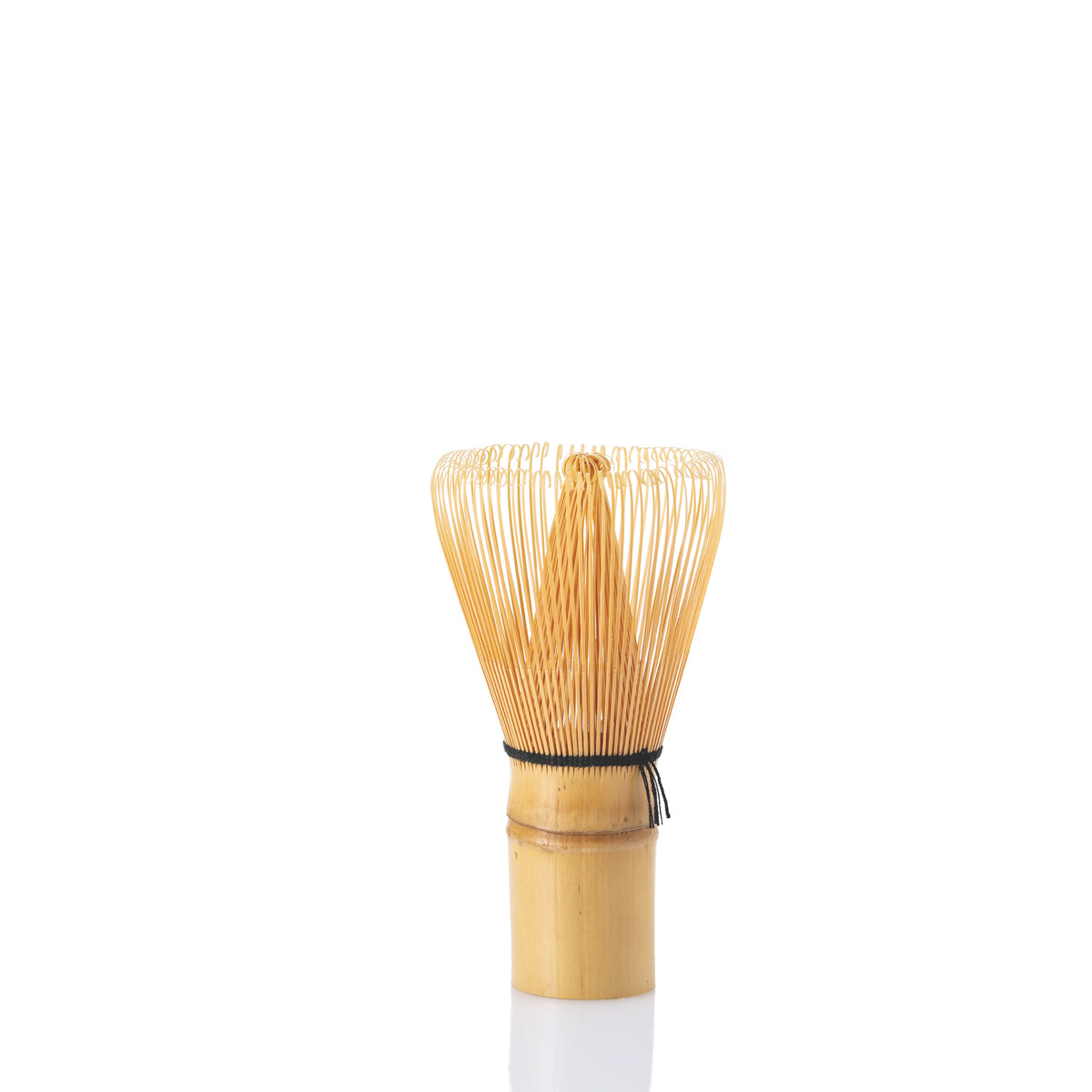
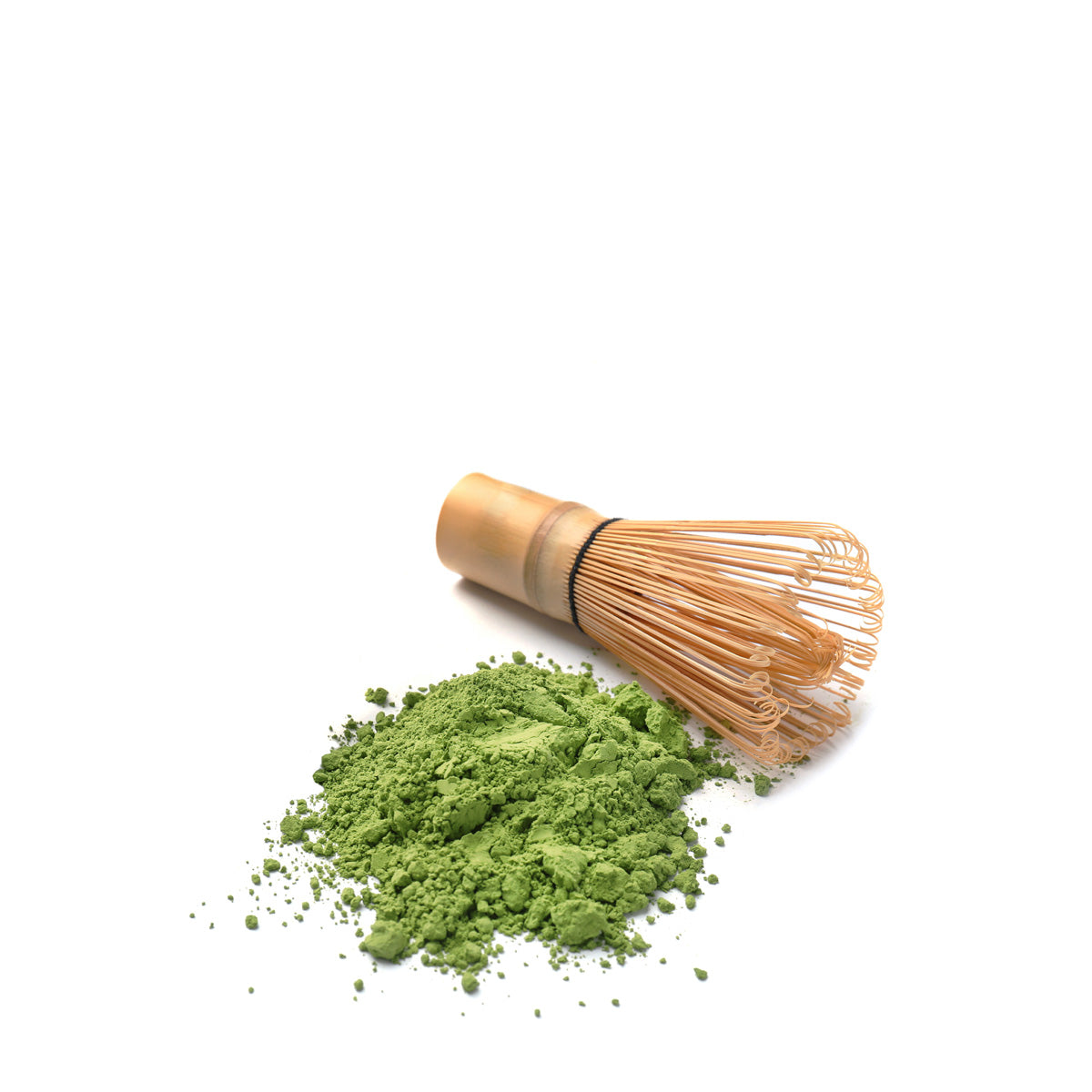
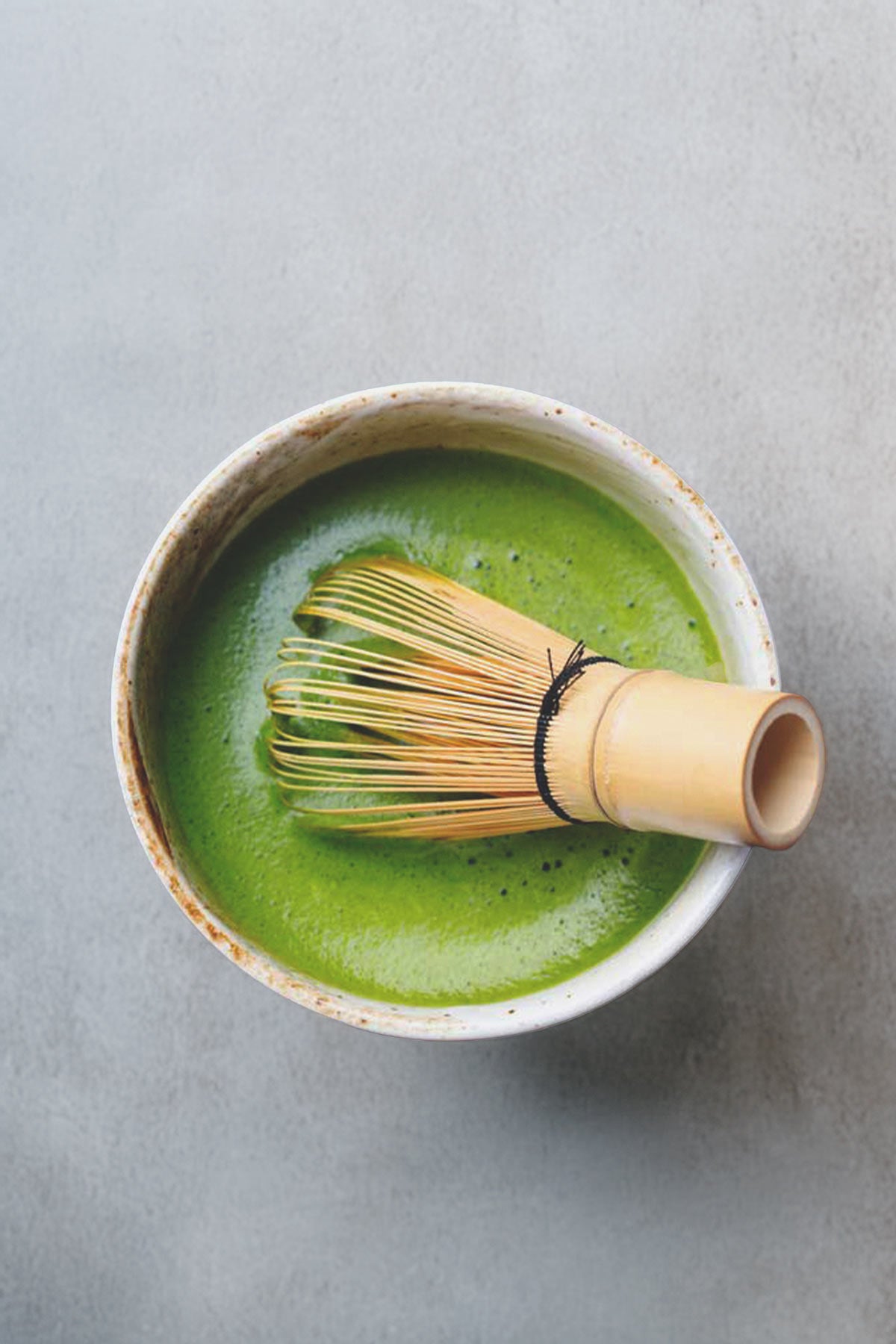
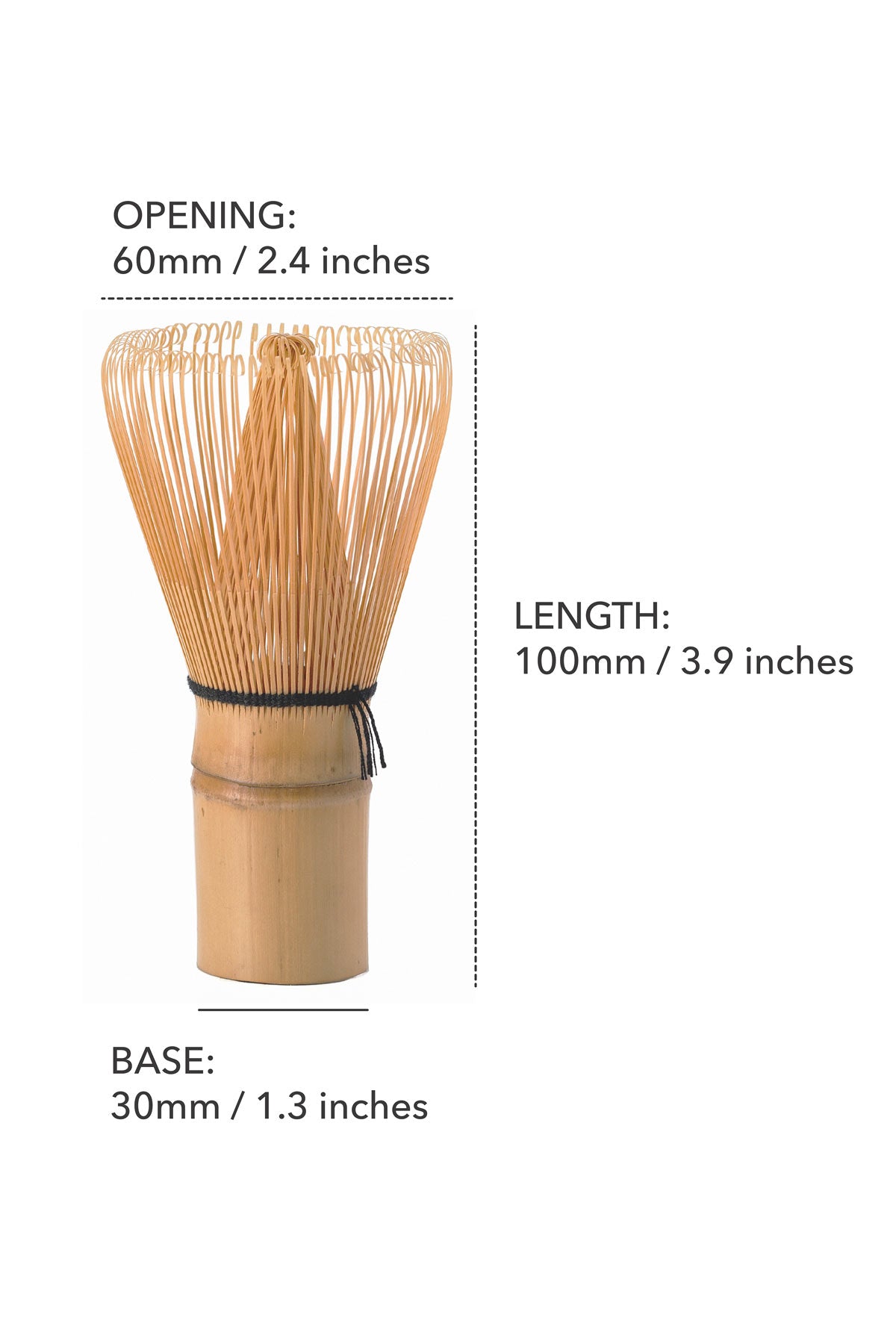
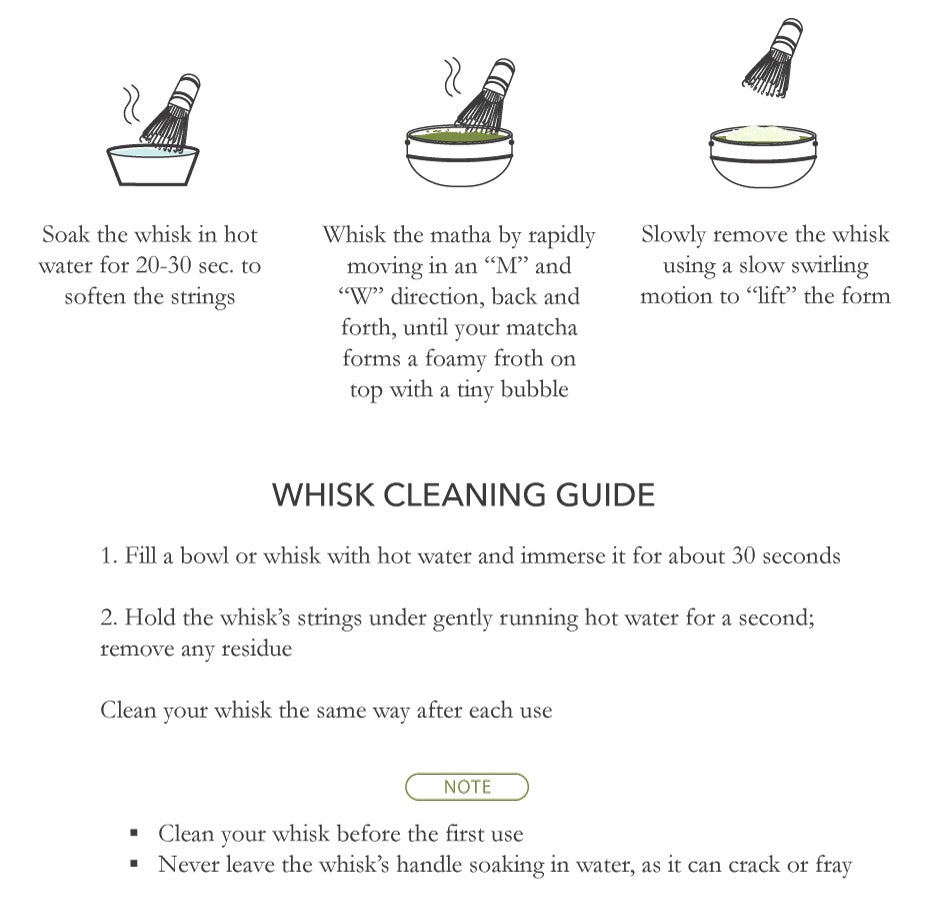
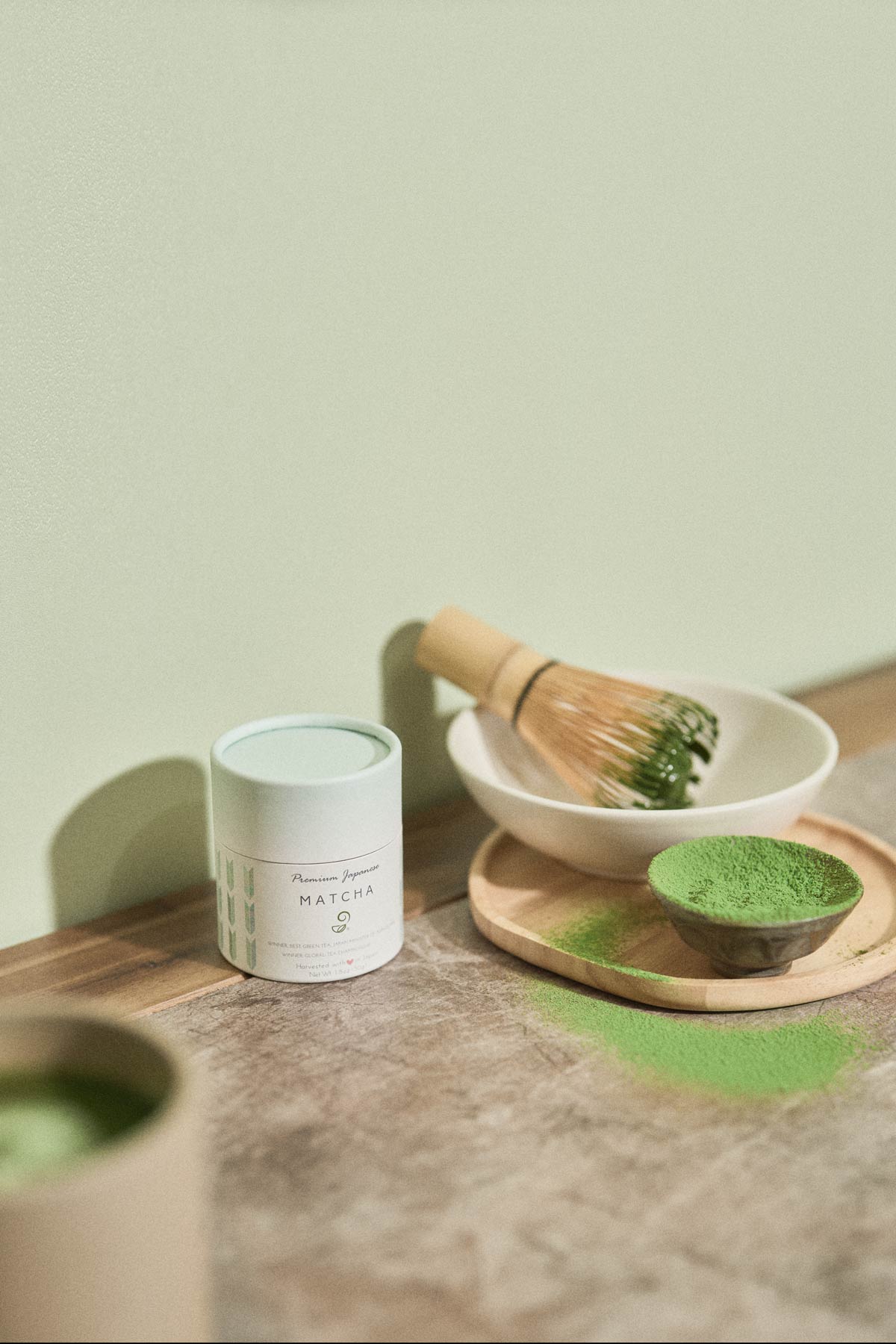








Hi Kunal,
Thank you for your comment! I’m glad that my post was helpful and that you were able to purchase your first chasen in Takayama. The Hyakunijuppondate chasen is a great choice! Enjoy your tea! :)
Hi Areek,
Before chasen was invented, tea was whisked with a chashaku (tea scoop) or a houroku (flat wooden spatula)
I found your post very useful and it helped me purchase my first chasen in Takayama. I got the Hyakunijuppondate chasen. Thank you very much!
Thank you for nice article.
I was wandering what tool was used in time before chasen appeared…?